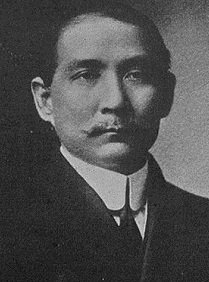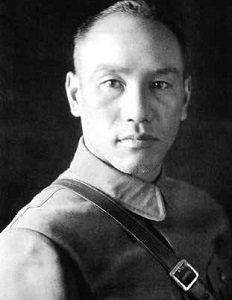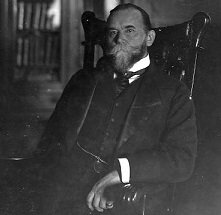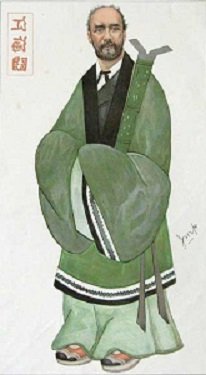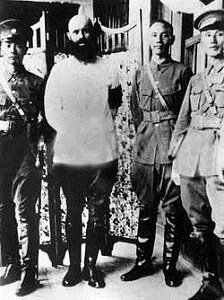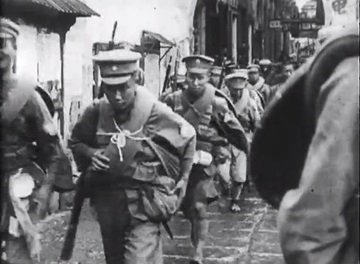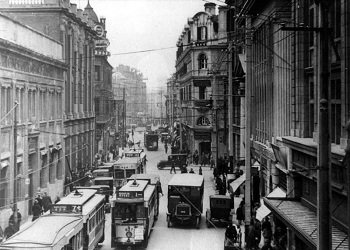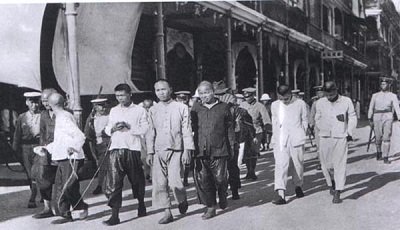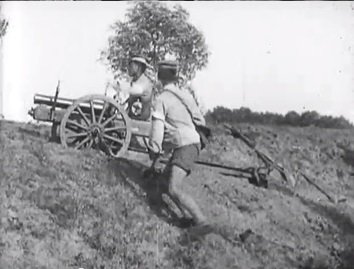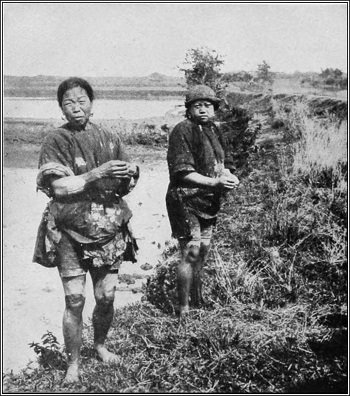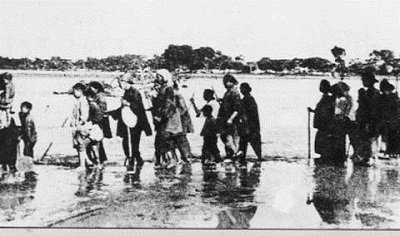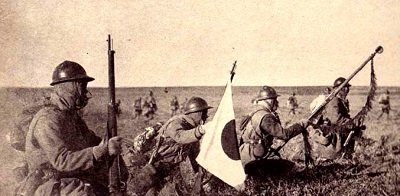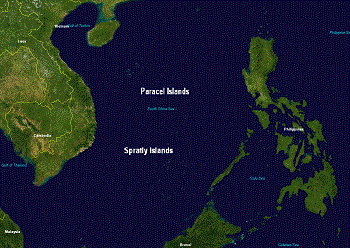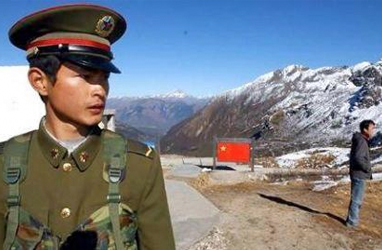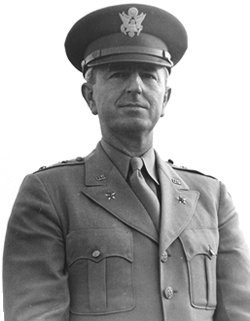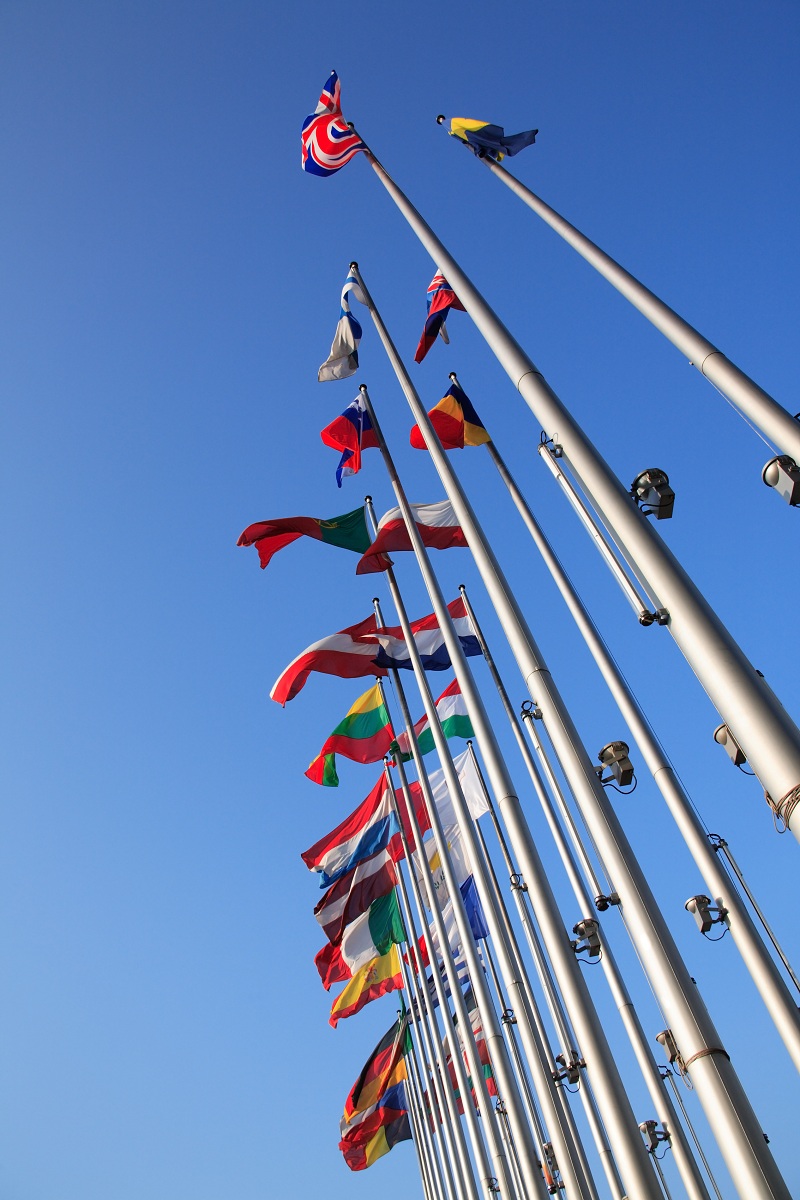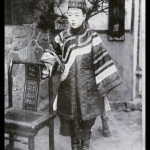Modern Chinese History II: Kuomintang and Communists – An Uneasy Alliance 1921-28
- Introduction
- Sun Yat-sen and the Rebirth of the KMT
- The KMT, Soviet support and Chinese Communist Party Alliance
- The Washington Conference
- Congress of the Toilers of the Far East
- The First United Front 1923-1927 and the Huangpu (Whampo) Military Academy
- Northern Expedition
- The Shanghai Coup also called the White Terror or the Shanghai Massacre
- Rural China in the 1920s
- What Happened Next
Introduction
Despite having only 53 members in 1921, the Chinese Communist Party (CCP) membership consistently expanded through 1928 by giving voice to workers and peasants. That said, during this time Sun Yat-sen’s Kuomintang Party (KMT), also referred to as the Guomindang or Nationalist Party, continued to enjoy greater prestige and numbers. Despite their widely differing objectives and conflicting aims, both the fledgling communists and the stronger KMT agreed that China must be reunited under one government and that foreign imperialism must end. With these common objectives in mind, the two parties joined forces to retake the fragmented provinces from the warlords during the 1924 Northern Expedition.
Yet as communist membership grew during the Northern Campaign, KMT’s new leader, Chiang Kai-shek, felt increasingly threatened by the CCP’s growing power. In 1927 Chiang launched a coup against the communists in Shanghai. From then forward, he became consumed with wiping out the communists often at the expense of defending China itself.
Driven out of the cities after the coup, the communists reorganized in rural areas. A series of devastating floods and droughts throughout the 1920s made the countryside ripe for communist influence, as did the harsh rural working conditions that most peasants experienced. It was during this time that Mao Zedong, among others, began arguing that the Chinese peasants were to be the key to social change in China. Meanwhile, Chang Kai-shek’s KMT advanced northward. Under his leadership, China was finally re-taken from the warlords in 1928.
Sun Yat-sen and the Rebirth of the KMT
Sun Yat-sen had escaped to Japan after the failed 1913 Second Revolution. By 1918, Sun returned to Shanghai where he began to reorganize his revolutionary political movement on a national basis. Sun laid out a three-stage revolutionary plan for China: first, China would be conquered militarily; second, a period of political tutelage would ensue, overseen by a benign dictatorship whose job would be to prepare China for democracy; third, China would establish a constitutional government. In 1921, Sun Yat-sen launched a military expedition which was the forerunner to the 1924 Northern Expedition against the warlords. The military expedition failed during conflict with the warlords of the southern provinces of Guangxi and Guangdong. In 1923 Sun struck again and this time was able to re-establish his power in Guangzhou under a nationalist military government.
By 1922, Sun restructured his party in order to improve both unity and discipline. The new KMT Party – now called the Chinese Revolutionary Party – was structured on a political platform based on Sun’s “Three People’s Principles”- national self-determination, people’s rights and people’s livelihood. The revised organization also gave Sun control of the National Revolutionary Army (NRA).
The KMT, Soviet support and Chinese Communist Party Alliance
While Sun had been restructuring the KMT, he had also been watching the rise of the CCP which was rapidly developing close ties to labor and agrarian organizations. In the spring of 1921, the Dutch Comintern agent H. Maring met with Sun. Maring left impressed with Sun’s ideas of revolution and nationalism. Maring was soon arguing to the Soviet Comintern that the CCP should expand their influence initially through the KMT instead of trying to make a go of it completely independently. As reunifying China was a goal shared by both the CCP and the KMT, Maring argued that the CCP should first join with the KMT to achieve reunification. The CCP could then proceed with its next objectives: the eradication of foreign imperialism, the organization of the urban proletariat for socialist revolution and the elimination of worker and peasant exploitation.
For his part, Sun was willing to accept the Communists for several reasons. Idealistically, he believed all Chinese, including Communists, should be given a chance to participate in his national revolution. Practically, he saw advantage in exploiting CCP labor and agrarian ties. He also thought accepting CCP members might give him access to Soviet aid; such assistance had not been forthcoming from the West. Furthermore, he realistically feared that independent growth of the CCP under Soviet aegis might undermine KMT authority. It might therefore be better to assimilate them within the KMT before they grew too strong.
Early CCP leadership only reluctantly agreed to the Soviet’s proposal. They feared KMT influence would corrupt their worker and peasant members. Eventually it was agreed that members of the CCP would join the KMT as individuals rather than as a group. This way they could also would retain their CCP membership. The CCP’s hidden plan was to eventually assume control of the KMT and then “squeeze out the rightists like lemons”.
In 1923 Sun sent his protégé, Chang Kai-shek, to Moscow to meet further with Soviet leaders. Chang Kai-shek was impressed both by the organization of the Soviet military and by the discipline of the Soviet Communist Party. Chiang encouraged Sun to employ some Soviet organizational methods to strengthen the effectiveness of the KMT. To this effect the Comintern agent Mikhail Borodin, was set to Guangzhou to advise the new KMT Central Executive Committee. While there, Borodin encouraged Sun to adopt a more radical agenda. He argued that workers and peasants would flock to the KMT if it promoted an eight hour workday, a fair minimum wage and the redistribution of landholders’ holdings to the impoverished peasantry. Sun demurred as he felt that he could not risk alienating key industrial and financial allies by supporting such bold social initiatives.
During January 1924, the first Congress of the reconstructed KMT was held. Sun’s stature and prestige were decisive factors in holding the CCP and KMT parties together, despite their often conflicting ambitions. Even today Sun remains revered in both parties.
USSR support for the new KMT was evidenced by a congratulatory telegram sent by the Soviet ambassador, Karakhan. Motivation underlying Soviet support was two-pronged. Not only did the USSR believe that the KMT would be useful to their goal of spreading revolution worldwide, but they also believed that building Chinese strength, regardless of the means, would help safeguard its borders.
In Asia, Russia’s most significant threat was Japan, a staunchly anti-communist country. Japan had already routed Russia during the 1905 Russo-Japanese War. Japan was now becoming a dominant force in Manchuria, on Russia’s southern frontier. It was thus in Russia’s interest for China to be strong enough to balance against Japan’s rise. As the CCP had only 300 members in 1923, CCP’s alliance with the KMT would help Russia to more quickly expand its influence in China.
The Washington Conference
These domestic political developments took place against the backdrop of two international conferences. The Washington Conference, held between November 1921 and February 1922, was attended by the nine powers which had interest in the Far East and the Pacific: the US, Italy, Great Britain, France, Japan, Belgium, the Netherlands, Portugal and China. A key American objective was to undercut the 1902 Anglo-Japanese Alliance. The Americans viewed the Alliance as contrary to their Open Door Policy which allowed all nations to have equal access to commercial and diplomatic relations, particularly with China. The Americans succeeded in getting the 1921 Four Power Treaty – signed by the United States, Britain, France and Japan – to replaced the Alliance. The new treaty stated that the four powers would resolve conflicts within their Pacific areas of influence by mutual agreement and not by force.
For their part, the Chinese delegation entered the Conference requesting participants to honor Chinese territorial integrity and political independence, to stop signing treaties between themselves which impacted on China, to respect China’s neutrality in future wars, to eliminate any foreign limitations imposed on its political, jurisdictional and administrative freedoms and to review foreign special rights and concessions in China. The proposal was sympathetically supported by the American and Europeans. In response the Nine Power Treaty was signed, which was to theoretically secure China’s territorial integrity and to restore Chinese sovereignty over parts of the eastern province of Shangdong.
Yet the Treaty lacked any enforcement provision, nor did it invalidate existing foreign privileges. To the ceaseless humiliation of the Chinese, foreigners continued to have significant control over Chinese Maritime Customs, the Salt Revenue and the Postal Service. The Chinese were also taxed without representation in the Shanghai International Settlement. Japan still controlled the Southern Manchurian Railway and used it to advance their objectives within Manchuria while the British dominated South China trade with Hong Kong.
That said, China concluded a 1922 treaty in which Japan agreed to return Jiaozhou and its surrounding region to China within six months, withdraw troops from the area and transfer the Qingdao-Jinan railway to China in exchange for 53 million gold marks. Great Britain also agreed to give up its British Weihai (also known as Weihaiwei) concession on the northern Shandong coast.
Congress of the Toilers of the Far East
The Congress of the Toilers of the Far East was held in Moscow in early 1922 as the USSR alternative to the Washington Conference from which it had been excluded. The Congress argued that the Four Power Treaty was just another means by which Western and Japanese imperialists planned to expand their power outside their own countries. It called for an indissoluble union of the workers of the Far East under the flag of the Communist International (Comintern). It was attended by representatives from China, Korea, Japan and Mongolia who all gave accounts of the conditions in their respective countries.
The First United Front 1923-1927 and the Huangpu (Whampo) Military Academy
The 1923-1927 First United Front marked the first period of cooperation between the CCP and the KMT. This included an interlude of preparation and training needed by both CCP and KMT members in order to ready them to launch what would be called the Northern Expedition. During the Northern Expedition, the CCP and KMT would fight together to retake China from the Chinese warlords.
Founded in 1924, the Whampo Military Academy was created to train the leadership of the United Revolutionary Army. Fresh from Moscow where he had been studying Soviet military methods and trying to obtain Soviet arms, Chiang Kai-shek was placed at the head of the new Academy. The Academy initially received 3000 applications and accepted 500, with a further 400 soon after.
- Selection criteria for admission were both physical and ideological. The cadets were to be given a thorough indoctrination in the goals of Chinese nationalism, KMT political philosophy and the Sun’s Three People’s Principles. The graduated officers were to form the nucleus of the National Revolutionary Army. Many of the KMT officers who trained at the Academy during this time became fiercely loyal to Chiang Kai-shek.
CCP members who were also KMT members were also eligible to apply. About 80 of the first 500 cohort were communists including Zhou Enlai who would eventually become the Premier of the People’s Republic of China under Mao Zedong. Indeed, just as it was for the KMT, the Academy proved to be an ideal platform to recruit and train future CCP elite.
Northern Expedition
On March 12, 1925 Sun Yat-sen died from liver cancer. Chiang Kai-shek rushed into the vacuum, quickly working to take control of both the KMT and the NRA. In what has been called the Zhongshan Incident, Chiang seized the Zhongshan gunboat as it sailed into Guangzhou on March 20th and arrested its CCP Captain. Chiang also arrested many CCP political leaders and their Russian communist advisors. He also disarmed the CCP-controlled Workers Guard Militia. He then took full control of the Whampo Military Academy and consolidated his own power in the KMT.
Going forward,Chiang issued a series of decrees designed to strengthen KMT leadership under his rule: no CCP members could head KMT or government bureaus; no CCP criticism of Sun’s Three People’s Principles would be tolerated; no KMT members could become members of the CCP; the Soviet Comintern was to communicate its orders to the KMT as well as the CCP; and names of CCP members were to be relayed to the KMT Executive Committee. He also made the KMT leadership swear an oath of loyalty to Sun’s Three People’s Principles, in effect cementing the Northern Expedition as a continuation of the vision of Sun Yat-sen.
Russian representative Borodin encouraged the CCP to accept these terms because Lenin’s death in 1924 had initiated a power struggle between Stalin and Trotsky. Stalin could not afford to look bad because the CCP and his Soviet advisers had been evicted from the KMT. The strategic policies the two Russian rivals were advocating for the burgeoning Chinese revolution were central to each man’s jockeying as he fought for power within the Russian Soviet bureaucratic arena.
Having consolidated his power over the KMT, in 1924 Chiang Kai-shek pushed ahead with Sun’s Northern Expedition. The Northern Expedition’s aim was to retake China from the warlords and to unify the country under KMT leadership. The Northern Expedition was initially fought along three lines: a western route to the city of Changsha in Hunan; a middle route along the Gan River into Jiangxi; and an eastern route into Fujian. The NRA formed alliances with amenable warlords as they fought north, absorbing their militias when possible. Smaller groups of primarily CCP members worked ahead of the army, organizing peasant and urban worker strikes to create disruption and chaos in areas into which the NRA advanced. Thousands of laborers were also organized to move military supplies over the large areas where rail, road and river made mechanized shipment impossible.
The NRA met light resistance as it moved north. This was partially because northern warlords, despite their superior forces, were too preoccupied fighting themselves to coordinate an attack against the NRA. Growing peasant and workers movements also significantly aided the NRA’s advance, as too did the defection to their side of naval units which blocked enemy retreat along the eastern prong of the NRA’s attack. By mid-December 1926, the nationalists had conquered Guangdong, Hunan, Hubei, Jiangxi and Fujian, and had negotiated control over Guangxi and Guizhou. This gave them effective control over territory inhabited by over 170 million people.
On January 11, 1927 Chiang Kai-shek traveled from his Nanchang base to Wuhan to meet the Western NRA arm. Disagreement had broken out between different NRA factions about the best way to continue the northern advance. The troops most closely associated with Chiang Kai-shek had fought along the eastern seaboard of the country while the branch of the army making its base in Wuhan was more heavily influenced by the more leftward leaning commissars and politicians. Chiang wanted to drive to Nanjing – which symbolized the short-lived republican government under Sun Yat-sen – and Shanghai – the industrial and economic heartland of China. In contrast, the more left-leaning Wuhan-based KMT leaders agreed with Soviet agent Borodin that the NRA should march northward toward Manchuria to take Beijing. Ultimately, Chiang won the debate. Chiang not only controlled more troops than the Wuhan NRA arm, but Stalin also insisted that CCP leaders in China must continue to cooperate with Chiang and the KMT.
As the NRA progressed northward during the first phase of the Northern Expedition, the relationship between the Communist and non-Communist members of the KMT remained fraught. Conflicting KMT and CCP orders often led to friction between the two groups. Also, although the CCP and the KMT shared the short term goal of uniting the country, it was clear from the beginning that each group had its own agenda while pursuing this goal. Chiang continued to exploit communist organizational skills and local knowledge to foment unrest in advance of the NRA while remaining deeply suspicious of growing communist influence. Similarly, many members of the CCP were still discontented about allying with the KMT despite Comintern directives. That said, their alliance and the Northern Expedition provided the communists with an unparalleled opportunity to organize and recruit new members for both the party and its affiliated trade unions.
Indeed during this time, due in large part to communist efforts, an All China Federation of Trade Unions (ACFTU or Zhonghua Quanguo Zonggonghui) was formed which was to coordinate worker actions throughout China. ACFTU remains China’s sole legal trade union today and is the world’s largest with more than 130 million members. By late 1926 73 unions were listed under its umbrella. The ACFTU not only helped the NRA advance, but within NRA-controlled areas, new trade unions were often quickly formed under its umbrella and urban residents were radicalized. For instance, in advance of Chiang’s February 1927 march toward Shanghai, Shanghai labor leaders and ACFTU organizers called a general strike which brought Shanghai to a halt for two days. The strike was eventually disrupted by warlord forces that ultimately killed 20 strikers and arrested 300 strike leaders. Yet Shanghai worker morale remained high and a second major strike was planned for when Chiang Kai-shek marched into the city.
Shanghai factory owners and financiers, however, risked heavy losses if the waves of strikes continued. Some of these leaders had links to underground organizations such as the Green and Red Gangs. At the end of 1926 the head of the Shanghai Chamber of Commerce met with Chiang Kai-shek in Nanchang to offer the NRA the Chamber’s financial support. Chiang also met with Huang, the patriarch of the Qing Bang, (the Green Gang, a notorious criminal group) who reportedly offered his services to break up labor unions and attack insubordinate workers in return for freedom to expand his opium, prostitution, gambling and labor racketeering businesses. There is no record of Chiang Kai-shek’s response, but subsequent events suggest that Chiang had struck some sort of bargain.
While in Nanjing, Chiang also met with Song Ailing, the oldest daughter of the late Shanghai tycoon Charlie Song, sister of Sun Yat-sen’s widow Song Qingling and wife of H.H. Hong. Both the Songs and the Hongs were Christian and thoroughly Westernized. Song Ailing told Chiang Kai-shek that he was at risk of being ousted by the left unless he secured the support of the Shanghai business world which her family could deliver. In return, she asked Chiang to appoint T.V. Soong and H.H. Hong as finance and prime ministers and to marry her youngest sister Song Meiling. Song Ailing was maneuvering her family into a position of significant influence over the KMT army and government. Chiang Kai-shek was keen as he found the idea of entering the Soong-Song-Sun circle alluring. One stumbling block to the plan, however, was that he was already married. Discarding his first wife, Chiang eventually married Song Meiling on December 31, 1927.
Foreigners in Shanghai, who had links with Chinese industrialists and financiers, were also getting nervous about worker agitation and the NRA advance. They feared both financial loss and for their own physical safety if fighting were to break out in the city. Increasingly, they amassed troops and police in Shanghai, and by the time Chiang Kai-shek entered the city, 42 foreign warships were at anchor in Shanghai’s port, backed by an additional 129 warships in other Chinese waters.
The Shanghai Coup also called the White Terror or the Shanghai Massacre
The NRA marched into Shanghai on the 22 March 22, 1927 without having to fire a shot. This lack of resistance was in large part due to another massive general strike and series of demonstrations that were called in support of the NRA and in support of the Workers’ Government that Shanghai workers believed would soon be established. Stalin told the CCP to cooperate with Chiang Kai-shek in Shanghai. Chiang Kai-shek issued strict orders to the labor unions, the communists and the NRA to leave foreigners and their property untouched. Once inside the city, Chiang Kai-shek issued reassuring statements to the foreign community. He also praised the unions for their contribution to the NRA’s success in taking Shanghai.
Yet, at the same time as celebrating Northern Expedition victories, Chiang Kai-shek was making plans to purge the Communists from the KMT. Having taken Shanghai, he now felt that he was strong enough to decimate their movement and to abandon the United Front. Indeed, Chiang Kai-shek felt that if he failed to act at this juncture, he risked losing control over both the Northern Expedition and over the type of country China would become once it was fully unified.
On April 12, 1927 a bugle call from Chiang Kai-shek’s headquarters was sounded, followed by a loud siren emitted from a gunboat anchored in the river. This signaled the start of the Communist purge. Wearing blue clothes and white armbands, armed members of the Shanghai’s Green Gang attacked the offices of trade unions affiliated with the communists. Li Dazhao, China’s leading Marxist theorist, was executed during the purge along with hundreds of pro-labor and communist supporters. Zhou Enlai narrowly escaped. The ACFTU was paralyzed by unclear orders – including inadequate directions sent by Stalin – and thus put up a weak defense. When Shanghai workers and students held a rally protesting against Green Gang and the KMT’s action the following day, they were fired on by KMT forces.
Although the ACFTU and the CCP organizations remained in existence after the purge, their links with the local community had been severed and their influence had been all but eliminated. The CCP alliance with the KMT nominally continued until 15 July when the CCP members of the KMT were ordered to renounce their Communist Party membership. At that point the Communist Party withdrew from the alliance.
In the wake of Chiang Kai-shek’s success, Trotsky faulted Stalin’s flawed leadership in China, arguing that he had contravened the fundamental Leninist principle that any alliance with bourgeois elements, no matter how temporary, was permitted only if the communists maintained organizational independence and freedom of action. To vindicate his China policy, Stalin issued an order encouraging the communists to raise a separate army and to transform Wuhan into a communist regime. The order was unrealistic. Instead, under widespread attack, the communists retreated from Wuhan. Borodin fled China for Russia via Mongolia in July 1927.
Yet in an ironic twist that Stalin could well appreciate, in the months after the Shanghai coup, Chiang Kai-shek launched a reign of extortion against the financiers, industrialists and the wealthy of the city. The purpose of Chiang Kai-shek shake down was to raise the millions of yuan he needed to finance the rest of the Northern Expedition. Chiang Kai-shek demanded, for example, that the chairman of the Shanghai Chamber of Commerce provide him with a multi-million yuan loan. When he refused, Chiang Kai-shek confiscated his property and drove him into exile. Wealthy businessman were browbeaten into purchasing a combined total of 30 million yuan of short-term government bonds, with larger businesses being required to buy as many as 500,000 yuan or more.
Kidnapping was rife. Children of rich residents were arrested as counterrevolutionaries and released only upon receipt of donations to the KMT. Green Gang agents facilitated KMT extortion. Through KMT’s newly created Opium Suppression Bureau, for instance, the KMT and the Green Gang divided profits from the sale of the drug and from the registration of known addicts. The appointment in January 1928 of his new brother-in-law T.V. Soong to run the government finances finally freed Chiang Kai-shek to continue the Northern Expedition as T.V. Soong took responsibility for guaranteeing that Chiang Kai-shek would receive the approximately 1.6 million yuan he needed every five days in order to finance his expedition. Chiang resumed the Northern Expedition in February 1928. By January 1929, the greater part of China was united under KMT leadership.
Rural China in the 1920s
For centuries, peasant uprisings had overthrown Chinese dynasties. Once again in the 20th century, it was eventually the peasants who would decide play an important role in determining who would rule China. Despite the expanding industrialization that China had been experiencing since the late 19th century and the growing urban movement, in 1928 approximately 75% of the roughly 450 million Chinese citizens tilled the soil. Life for the average Chinese peasant varied greatly, depending on the quality of soil that he worked and whether or not he owned the land. Land was more fertile and therefore life was better in the southern rice paddies than it was in the poorer soils of the west and north. Yet for all farmers, life was incredibly difficult. Almost all farming was done by hand and by beast. Produce that wasn’t consumed by the farmer was sold in village and regional markets along with handmade handicrafts, tools and processed foods.
Social and ritual life was hugely conservative and was based on both Confucian traditions and those of the local Buddhist or Daoist temples. Other societies or social organizations were organized between women, within villages or within regional areas. During the Warlord Era, some villages formed self-defense organizations such as the Red, White and Yellow Spears which were active mainly in the northern Chinese plains. Eventually, the CCP would try to recruit the Red Spears and other such secret societies as allies in their fight against the KMT.
Rural China also frequently suffered drought and flood. This was particularly true throughout the 1920s. In 1920 and 1921, for instance, a severe drought in northern China brought famine. The famine not only killed approximately half a half million people but it also destroyed the regional economy. Like many of the droughts that have plagued China even up to the present day, the effects of little rain were exacerbated by overpopulation and by soil erosion due to extensive logging and overgrazing of livestock. In 1923 further drought and flooding caused the deaths of an additional 100,000 people. In 1925 another devastating drought killed almost 3 million people in the Sichuan area. In 1926 the Yangtze and Gan rivers flooded. From 1928 to 1930, drought and famine devastated the whole of northern China affecting more than 20 million people. This ruinous plague of drought and famine throughout the 1920s left much of rural China in crisis. Eventually, the communists were able to exploit this crisis by promising the Chinese peasant a better, more prosperous and fairer way of life.
Early on, key Chinese Marxists theorists such as Li Dazhao and Peng Pai recognized the need to adapt Russian Marxism to Chinese reality. In other words, there could be no communist revolution without engaging the peasants as they represented the majority of the Chinese population. In the early 1920s, Peng Pai created a system of peasant associations in Guangdong province which campaigned against high rents, rural social injustice and landlord abuse, demonstrating to early CCP activists that an alliance between peasants and communists was possible. Mao Zedong, who had studied under Li Dazhao, traveled through his native Hunan in 1927 and his experiences there helped shape his belief that, for China, the peasants would be the key to the Communist communist revolution. From then on, he became a strong advocate of shifting Chinese Communist strategy from a focus on organizing the urban worker to mobilizing the poor and discontent farmers.
What Happened Next
The period between 1927 and 1937 is often referred to as the Nanjing Decade. The new KMT Nanjing-based government was recognized by the international community, most of southern China, and a large part of northern China, although it did not control Manchuria nor did it have perfect control over many former warlords. Chiang Kai-shek tried to consolidate his power by eliminating warlord rivals. As a result, by 1929, civil strife once again broke out as warlords maneuvered to retain influence. Dealing with this power struggle meant that the much needed and long promised social reforms were slow in coming. For most Chinese life improved little. This created discontent that the Communists would eventually exploit.
The CCP in the meantime regrouped in rural southern Jiangxi. There they experimented with social policies that were to prove the forerunners of their ultimate governing practices. Repeated KMT attacks eventually forced the CCP on the epic retreat now known as the Long March.
As a backdrop to the KMT-CCP struggle was Japan’s increasing expansion into Manchuria and northern China. It was Chiang Kai-shek’s strategy to placate the Japanese while focusing on Communist eradication. However, rival KMT leaders finally forced Chiang to abandon war against the Communists and to fight growing Japanese aggression which culminated in Japan’s full-scale invasion of the China in 1937.





